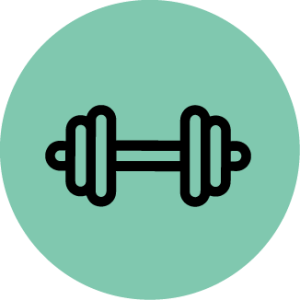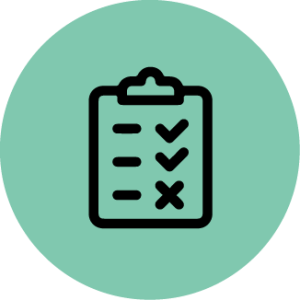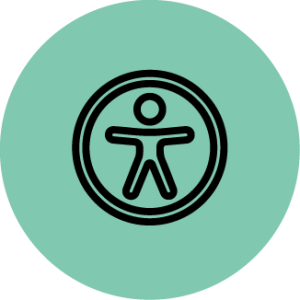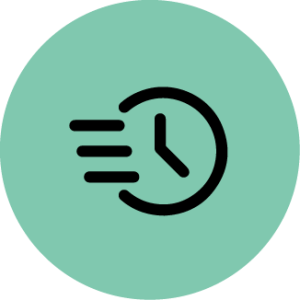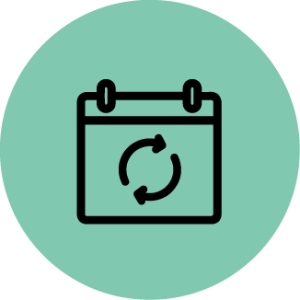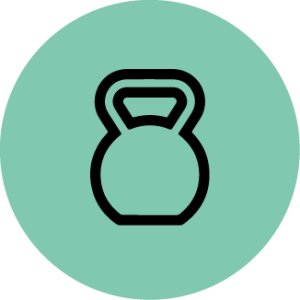Whether you’re at the beginning of your fitness journey or you’ve been following an exercise routine for years, you can set yourself up for even more success by investing in expert support. The best workout apps offer a wealth of tools and resources that can give you a clear direction, help you remain accountable, and allow you to track your progress.
From on-demand workouts to virtual boot camps to personalized strength training plans, workout apps provide a wide range of options to help people of various skill and fitness levels become stronger, fitter, and healthier. To guide you in the right direction, our team researched and tested more than 30 fitness apps to evaluate critical characteristics such as pricing, ease of use, equipment demands, and workout variety so you can select the one that best aligns with your goals and needs.
Editor’s choice: Caliber
With coaching options ranging from groups to one-on-one attention, Caliber earns our pick as editor’s choice. Our product tester gave the app top accountability and instruction scores, and she enjoyed working with her coach. You can read our full breakdown of this app in our review below.
Our picks of the best workout apps
- Best personalized: Caliber
- Best AI app: Simple
- Best for women over 50: Reverse Health
- Best for beginners: BetterMe
- Best for home workouts: Shred App
- Best workout tracking: Boostcamp
- Best for men: Centr
- Best for gym workouts: JuggernautAI
- Best for building muscle: Ladder
- Best for beginners: iFIT
Compare workout apps
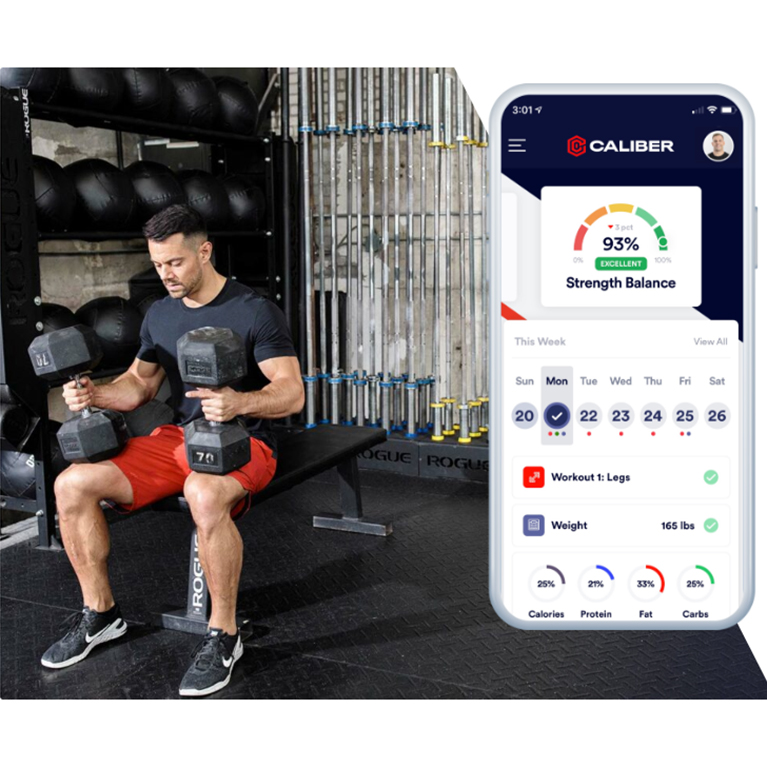
|
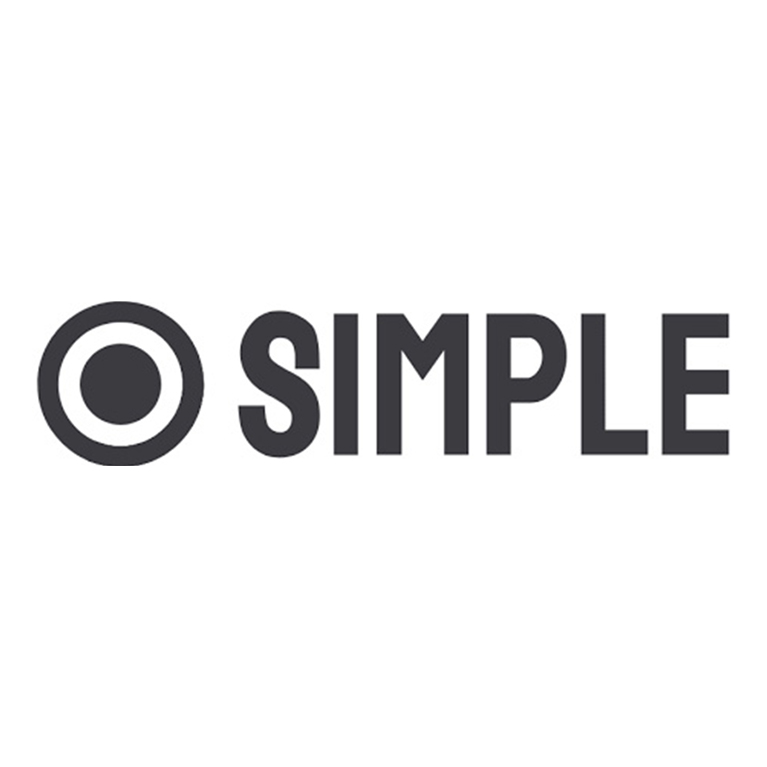
|
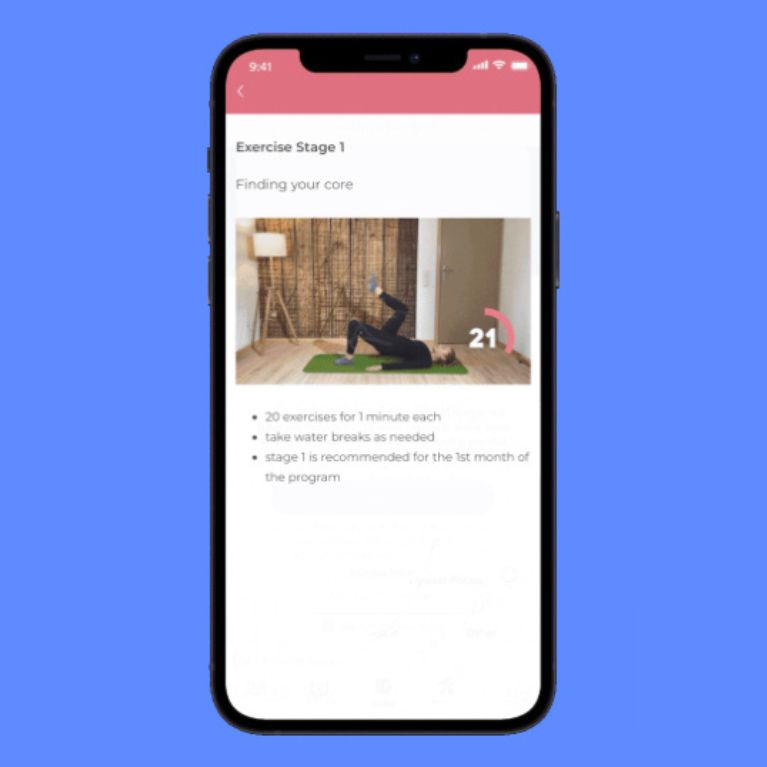
|
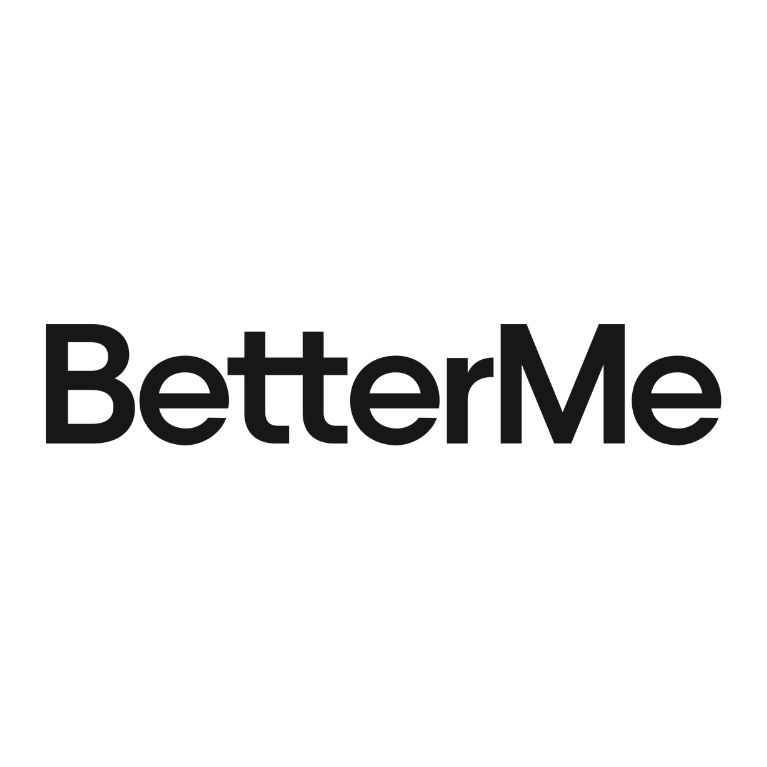
|
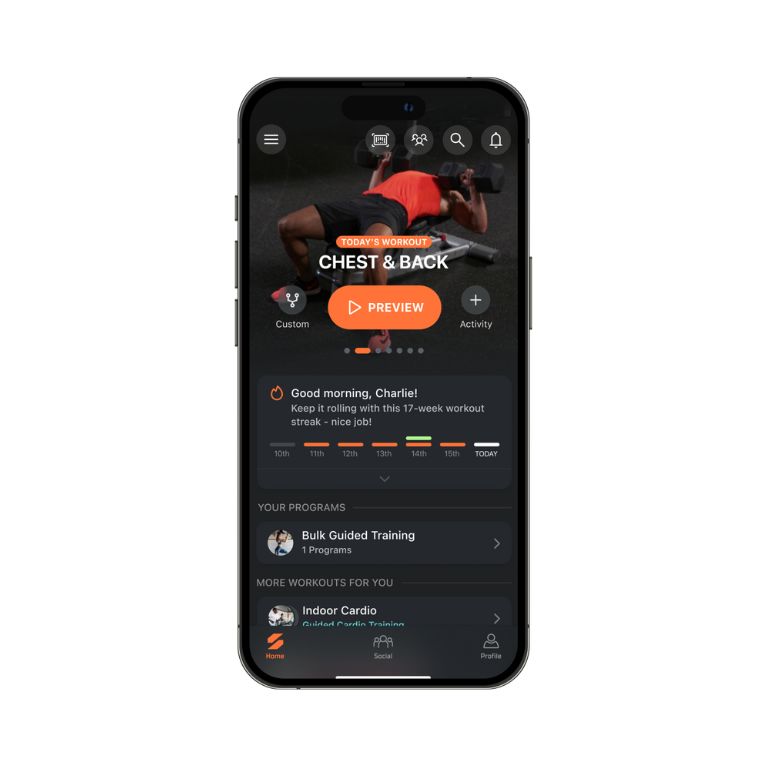
|
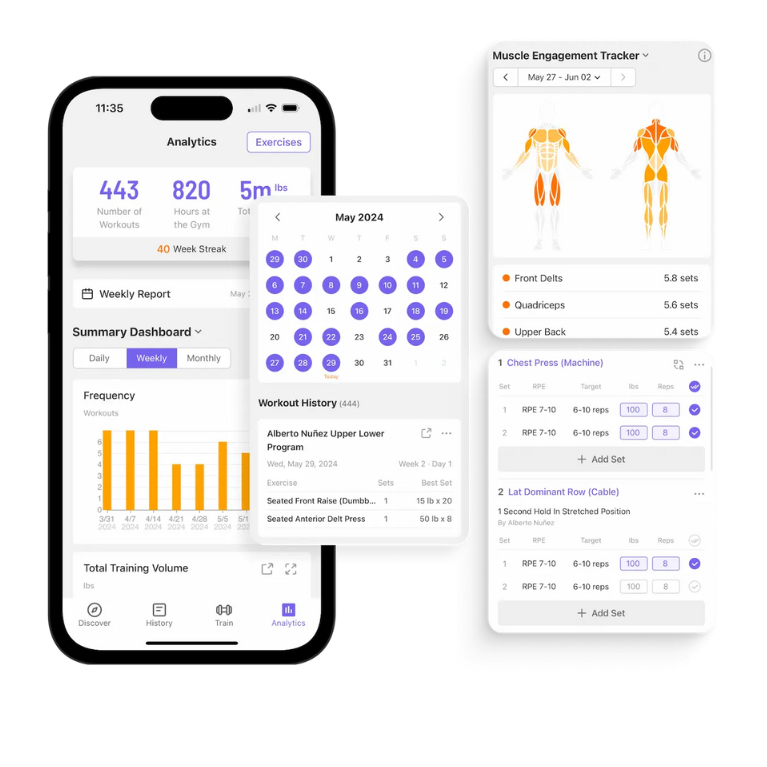
|
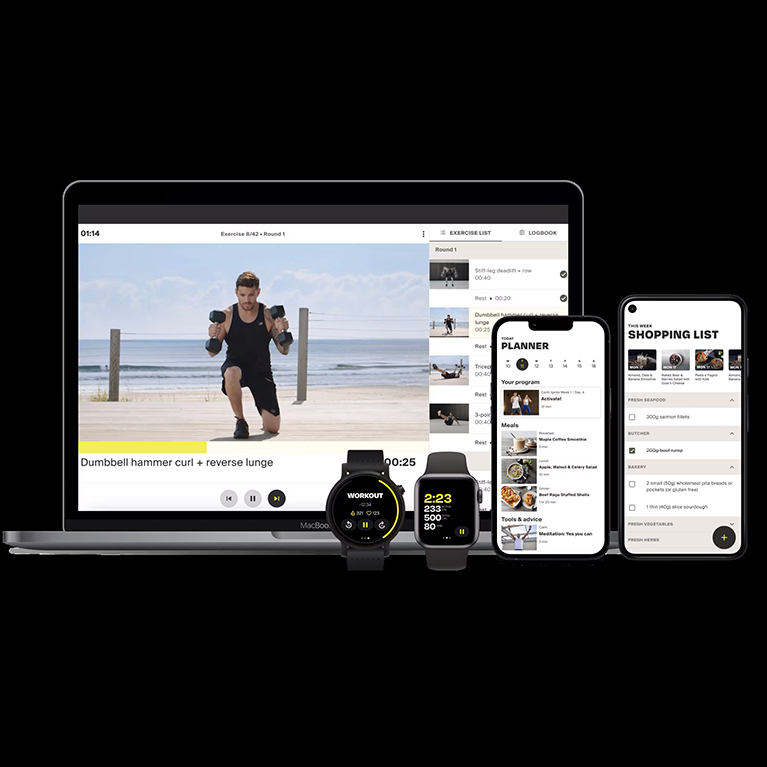
|
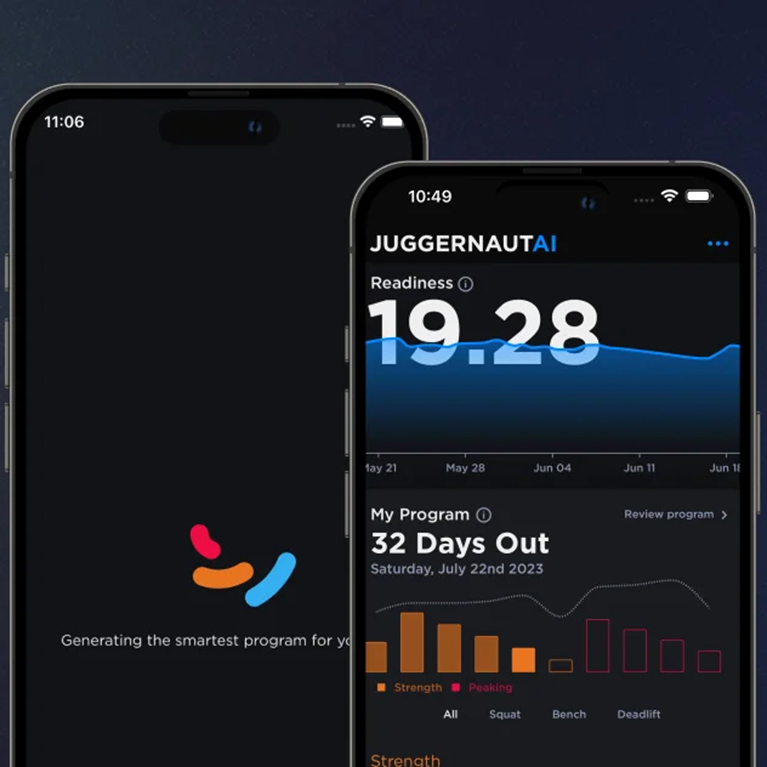
|
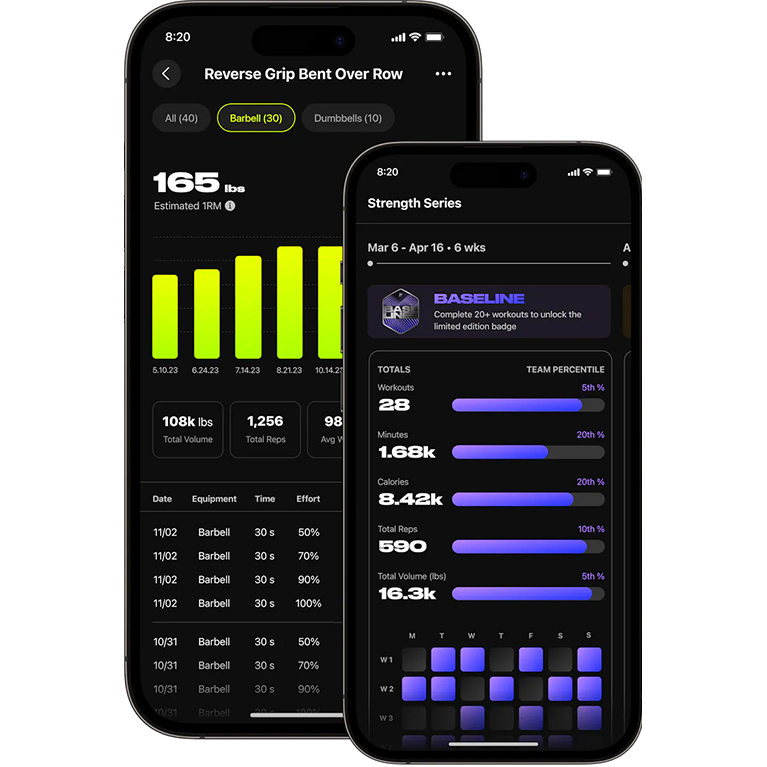
|
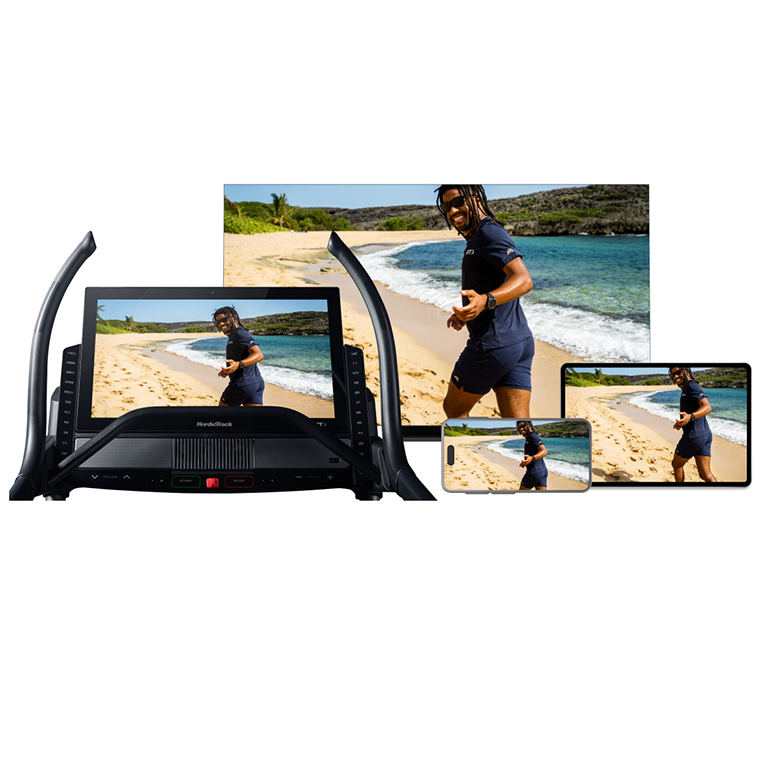
|
|
| Caliber | Simple | Reverse Health | BetterMe | Shred App | Boostcamp | Centr | JuggernautAI | Ladder | iFIT | |
| Rating | ||||||||||
| Free trial | Free forever version | 7 days | One month after you sign up | 7 days | 7 days | 7 days for Boostcamp Pro | Seven days | Two weeks | Seven days | 30 |
| Workout types | Cardio and strength | Bodyweight, strength, cardio | Pilates, yoga | Bodyweight exercises, strength, Pilates | Cardio and strength | Bodybuilding, powerlifting, sculpting | Cardio, strength, functional fitness | Strength, powerlifting | Strength | Cardio, strength, functional fitness |
| Price | $200 a month (can vary depending on your plan) | 7-day plan: $4.99 Monthly plan: $17.99 Quarterly plan: $29.99 Annual plan: $49.99 | Monthly plan: $60 Six-month plan: $144 Three-month plan: $124 | $20 per month | Free starter version; $19.99 monthly; $119.99 annually | $79.99 | $30 a month; $60 for three months; or $120 for one year | $35 a month for a monthly subscription; $350 for an annual subscription | $30 a month for a monthly subscription; $180 for an annual subscription | $15 a month for an individual plan; $39 a month for a family plan |
Best workout app for women: Caliber

Key product features
What you should know
Depending on which tier you choose, Caliber offers group and individual coaching that includes customized training and nutrition protocols. This may appeal to women who want to simultaneously lose weight while maintaining or gaining muscle.
- Our product tester enjoyed working with a coach who showed flexibility and understanding in coming up with an alternative measure to hold her accountable to her diet.
- With individual coaching packages starting at $200 per month, Caliber can become quite expensive, especially if you want strategy calls or live training sessions with your coach included.
- While the free-forever version can get you started, Caliber Premium will give you the most personalized training experience.
Why we like Caliber as best for women
If you’re on the lookout for a workout and nutrition app that tailors plans to your needs, Caliber is an excellent choice. Available in three tiers, the platform relies on scientific principles and data to drive its programming.
While our product tester opted for the Premium Coaching package that starts at $200 a month, she noted that the free version gives you access to a library of basic workouts that can help you get jump started. There’s also a Pro version that costs about $14 a month and provides group coaching.
With the Premium Coaching tier, you get a coach who creates personalized workouts for you. You can even upgrade (for an additional $66 a month) to get weekly or monthly video calls to discuss your strategy and any issues you’re facing.
Caliber received top scores from our product tester for accountability and instruction—two crucial aspects that impact your results. (1) She appreciated the weekly check-ins with her trainer that provided opportunities to not only discuss the previous week’s workouts but also set goals for the next week.
The app features video demos for every exercise, making it easy to understand each movement. If you’re concerned about your form, you can record yourself and send it to your coach for quick feedback.
“This is particularly important as…proper form during exercise improves self-efficacy, or your confidence in your ability to exercise,” adds Dr. Jen Roper, Ph.D., CSCS, and Associate Professor of Health and Human Sciences at Loyola Marymount University. “The higher your self-efficacy, the more likely you are to stick with your exercise program.” (2)
Caliber uses measurements like strength score and strength balance to track your progress, which is beneficial for women who prioritize weight loss and muscle gain. The workouts are structured in stages, with the same exercises for a few weeks, gradually increasing intensity. This type of periodized training can produce greater strength gains than non-periodized training. (3)
“My coach gives me goals to hit each week regarding weights and reps to ensure I’m progressively overloading,” our reviewer wrote.
“The current evidence supports this idea of the benefits of periodization for maximizing muscle strength, both in trained and untrained individuals, improving the utility of this app,” adds Chris Mohr, Ph.D., RD. (4)
Caliber extends its assistance beyond workouts to include nutrition coaching. Our tester received sound advice from her trainer, who also holds a nutrition coaching certification. The nutrition coach even addressed issues with food tracking by sending photos of meals as a less stressful alternative.
Keep in mind that because Caliber coaches aren’t registered dietitians, they can’t provide highly specific meal plans, medical nutrition therapy, or suggest a particular diet based on your health history. (5) Their focus is more on teaching you how to track your food, offering tips for healthier choices, and explaining different diets.
For tracking nutrition, Caliber utilizes an app called Cronometer, which includes a handy barcode scanner for quickly adding new foods to your log. Your coach has access to your Cronometer data, which can help make your check-ins more informative and keep you focused and accountable during your fitness journey.
What customers are saying
Reviewers on the Apple App Store speak highly of the individualized attention they receive from their coaches, which helps them stay on track and feel empowered.
“Caliber is an excellent choice for workouts,” wrote a user with the screen name Brandingo28. “Whether your goal is to lose weight or build muscle, Caliber provides the user with science-backed workouts and lessons that help users understand certain things about working out.”
Another user found investing in the Caliber app to be worthwhile, especially when trainers in her area cost almost $100 a session. In addition to adjusting her workouts based on her work schedule, her coach conducts several weekly check-ins to answer any questions.
Although most reviews contained positive feedback, one customer wasn’t impressed with her trainer. She called out her coach for failing to maintain consistent communication and updating her workout schedule.
“The trainer, while nice, offered very generic messages 1-2x per week,” commented a user with the screen name The local traveler. “Although they did seem encouraging, it sounded like a copy and paste type message. I fell behind on logging workouts for a week and noticed the trainer did not mention anything about it so I thought I would go another week without logging anything to see if they noticed (accountability). Nothing was ever mentioned.”
Specs
| Price | $200 a month (but can vary depending on your package) |
| Free trial | No, but there is a free-forever version |
| Compatible with | iOS, Android |
| Workout types | Cardio, strength, functional fitness |
Best AI workout app: Simple
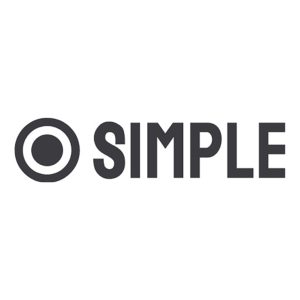

Key product features
What you should know
Simple is an intermittent fasting app that has reminders to start and stop fasts, while tracking your exercise, hydration, and providing feedback on meals.
- Simple offers strength, yoga, stretching, cardio, and high-intensity interval training (HIIT).
- At $ 17.99 per month, this app is pretty affordable compared to similar apps available for download.
- This workout app is well-suited for at-home training since you do not need any equipment to exercise along with the video.
Why we like Simple as best AI app
Simple is an AI-powered intermittent fasting app, which sends reminders to you to start and stop fasting during a certain window during the day. Intermittent fasting isn’t new—it’s been around for many years and has shown to help people achieve weight loss. (6)
This intermittent fasting app is free to download, but you have to pay for a subscription to access its feature-rich platform complete with exercises, tracking tools, and AVO, an AI-chatbot trained by doctors and health coaches to help answer your questions.
From planks to push ups to burpees, there are a ton of exercises that don’t require equipment, except for a yoga mat, to help you gain muscle and lose weight.(7) Simple is for self-starters who are motivated to workout at home or anywhere because you don’t need barbells, dumbbells, or even a jump rope to do the prescribed exercises. For example, you can find follow the video to complete a power strength workout that involves squats to fire up the quads and strengthen your core and back, while increasing mobility. (8)
Our tester said that using the app itself was pretty straightforward. Simple gave her a “to-do” list which consisted of a few instructions about how intermittent fasting works. It also asked to connect to her iPhone. She was able to set how long she wanted to fast for and adjust what her eating window was, which she made from 12:00 PM to 8:00 AM each day, which is mostly when she is sleeping. Simple allowed her to see her fasting “countdown” and progress for the day on her phone’s lock screen which was a helpful reminder to drink water and log water intake and eat enough during the non fasting window,
There is also the Weight Performance section of the app. Here, our tester was able to log her progress as well as upload progress photos of herself. As the week went on, Avo, the wellness AI app, sent a lot of notifications during the day, many of which encouraged her to add lemon to her water during fasts or to ask Avo a question. After a while, the notifications became a little tedious and distracting, but overall the app worked well to help her with intermittent fasting.
Simple offers the paid version of the app at different price points:
- 7-day plan: $4.99
- Monthly plan: $17.99
- Quarterly plan: $29.99
- Annual plan: $49.99
What customers are saying
The Simple app has 23,857 reviews on Trustpilot with 57% reviewers giving it five stars.
“Simple has made me mindful about food choices, staying hydrated and mixing up my exercise to match my energy level. Avo has helped me be accountable to this process. This has been a reaffirming app for me.”
Heidi K., Trustpilot
However, not everyone likes the AVO AI coach and some have complained about the app being buggy.
“At first I was satisfied, soon the amount of messages from their AI coach soon started to be really annoying,” says verified customer Anne S.
Specs
| Price | $17.99 month |
| Free trial | Yes, one week |
| Compatible with | iOS, Android |
| Workout types | Cardio, strength, functional fitness |
Best workout app for women over 50: Reverse Health
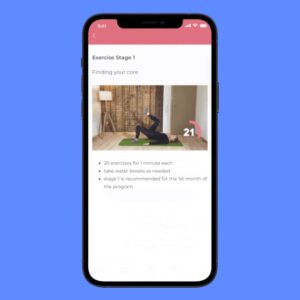

Key product features
What you should know
Reverse Health is geared toward women over 50 who want a meal plan and exercises to help them on their weight loss journey.
- We love the healthy recipes and also the calorie and exercise tracking.
- The one-month plan is $60, the six-month plan is $144, and the three-month plan is $124, which is a mid-level cost compared to other apps.
- Reverse Health offers handy tips to address menopause symptoms like weight gain, mood swings, and sleep disturbances that commonly affect women in middle-age.
Why we like Reverse Health as best for women over 50
Reverse Health is the best app for women near age 50 or over, because it is designed for women who experience common menopause symptoms including mood changes, night sweats, increased appetite, weight gain, and joint pain. The free Reverse Health app helps women adopt new habits by offering nutritious recipes and low-impact strength exercises, yoga, and pilates exercises via video.
Reverse Health offers a 14-Day Menopause Diet Plan to help relieve the symptoms that disrupt your days and nights. Here’s a menu for one day on this diet plan.
- Breakfast: Chicken and veggie omelet with spinach, tomato, mushrooms
- Lunch: Kale and quinoa salad with corn, red onion, red pepper, chickpeas, walnuts, lemon juice, olive oil, parsley
- Snack: Protein shake and apple
- Dinner: Honey, soy and garlic baked chicken with brown rice, steam vegetables
Download the Reverse Health app to an iOS or Android device to manage your subscription and check out health content like exercise and recipes. To access yoga and pilates exercises, go to the Fitness tab on the app and scroll through to find one that works for you. Use the app to track movement, weather, weight, and meals. Menopause experts offer a live monthly Q&A with members who want to join.
Reverse Health offers a few different plans. The one-month plan is $60, the six-month plan is $144, and the three-month plan is $124. You have 30 days to decide if you’d like to cancel for a money-back guarantee.
If you’re not getting the results you want, Reverse Health also offers weight loss GLP-1 medications, Ozempic™, Wegovy™, Zepbound™, Mounjaro™, and Saxenda™. To determine eligibility, you must fill out a quiz about your health, weight, and weight loss goals.
What customers are saying
Reverse Health has gotten 6,188 reviews on Trustpilot and users have a lot of positive feedback about the meal plans and exercise program, but there were a few complaints about billing errors.
“I’ve been struggling with weight gain since I’ve began menopause. I am committed to exercise and strength training five days a week and still could not lose weight or belly fat. Within the first 10 days using the Reverse Health meal plan I lost four pounds!”
Nicole, Trustpilot
However, some customers have issues with billing practices and customer service.
Jackie H., a verified buyer said, “Customer service is dreadful. Instead of honoring my request to cancel and obtain a refund I just keep getting emails from different people offering me discounts. Still no refund. And the issue continues.”
Specs
| Free trial | One month after users sign up for plan |
| Features | VIdeo coaching, macro counting, pilates |
| Month-to-month cost | $60 for the monthly plan |
| Platforms | iOS, Android |
Best workout app for beginners: BetterMe
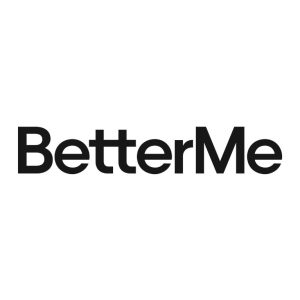

Key product features
What you should know
BetterMe is a great way for people to get into strength training who don’t want to join a gym. The only equipment you’ll need is a yoga mat.
- Our team loves BetterMe’s bodyweight exercises, Pilates, and mindfulness training.
- At $20 per month, BetterMe’s price is pretty average. If you want to add coaching to your BetterMe experience, it costs an additional $3.99 per message.
- BetterMe is a great option for beginners looking for an exercise and nutrition-centered approach to weight loss.
Why we like BetterMe as best for beginners
Getting into a weight loss journey can be overwhelming, but getting started with BetterMe is simple. A basic quiz helps assess what will work best for you based on biometrics like age and weight loss goals.
BetterMe has tracking capabilities and workout tools and also educational articles on nutrition, diets, fitness, weight loss, and mental health support. If you’re new to tracking macronutrients like protein, carbs, and fats, the BetterMe blog offers tips to help you track these data. While you’re tracking your meals, snacks,and water intake, review the workouts that require no equipment like strength training and pilates. Studies show that resistance training and bodyweight exercises like squats and pushups can reduce fat and increase lean muscle. (9)
BetterMe costs $20 a month, but the app does start to get more expensive if you add in messaging with a coach or opt to participate in fitness challenges. These add ons increase the price to $30 to $40 per month.
BetterMe’s website markets a different price than the Apple App Store. If you sign up on the website the 4-week workout plan costs $38.95 without a free trial, but they do offer a first-month discount. In the Apple Store, it costs $19.99, and you get a free trial.
Subscribers receive access to trainer advice and exercises based on your current skills. Like most fitness app subscriptions, you will be automatically renewed each month unless you manually cancel the subscription.
What customers are saying
BetterMe has 41, 093 reviews on Trustpilot with 60% five stars.
“I am always skeptical about these apps but I have been consistently working out with the app for around a week and I am beyond impressed and loving it! The price for the year is insanely cheap for an app with all the features it has! I definitely recommend it, especially for beginners to pilates!,” says verified buyer Angelle.
That said, not everyone is having a great experience with BetterMe, particularly with customer service.
“They make it extremely difficult to cancel the subscription. There was no cancellation button on the internet or on the app. I had to dispute charges on my credit card. Customer service sucks. Why can’t they just cancel your subscription? They also emailed me saying that I was going to be charged if I don’t cancel. I tried canceling and there is no cancellation button whatsoever. I would not recommend them,” says Jason R, verified buyer.
Specs
| Free trial | 7 days |
| Features | Bodyweight exercises, strength, Pilates mindfulness training, and nutrition tracking. |
| Month-to-month cost | $19.99 |
| Platforms | iOS and Android |
Best home workout app: Shred App
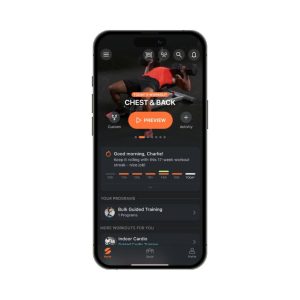

Key product features
What you should know
Using its AI-powered personalized workouts, the Shred App automatically adjusts your workouts based on performance, equipment and goals.
- We love the easy-to-use interface that can switch between customizable home and gym workouts.
- With a free starter membership and either $19.99 per month or $119.99 per year subscription options, Shred is one of the most affordable apps on our list—and much cheaper than a human personal trainer.
- Shred is a great option for people who want to create a home workout routine while maintaining a sense of community.
Why we like Shred App as best for home workouts
The Shred App offers a range of benefits that make it appealing to those looking for a great home workout. One of the standout advantages of Shred is its AI-powered personalized workouts, which adjust based on your performance, equipment, and goals. This helps ensure that each workout is tailored specifically to you, which sets it apart from other apps.
The ability to customize workouts based on available equipment is super useful for people who like to switch up their routine or go from their home gym to a community gym. We love this flexibility and, again, customizability.
Another key strength of Shred is its community-driven social features, which allow you to compete with friends (if that’s your thing), join group challenges, and share your stats and progress. This social aspect adds a layer of motivation and inspiration that other apps might not have.
Additionally, the user-friendly interface that integrates video exercise demonstrations makes it easy for people who want to review form and are not super tech-savvy to follow along. The inclusion of progress and weight tracking features that sync with Apple HealthKit also provides a comprehensive fitness overview if you’re looking to track your improvements over time.
One potential downside of the Shred App is that it may feel a bit overwhelming for beginners. The variety of options and customizable features, while beneficial for more experienced users, might make it harder for those new to fitness to navigate. Additionally, unlike some free apps like Nike Training Club, Shred operates on a subscription model (monthly or annual are available), which may not appeal to users looking for a completely free option. While the AI-driven workouts are a plus, the app’s focus on customization and intensity could also be a drawback for casual users who are not looking to track specifics.
Another downside is the lack of variety. For those who like to switch between yoga, Pilates, cardio and strength workouts there isn’t as much variety in terms of style of workout as some other apps. Shred is limited to home and gym strength workouts, which is great for some but not all people.
In terms of user feedback, Shred generally garners positive reviews. Many users praise the app for helping them stay motivated and on track with their fitness goals. The combination of structured programming with a dash of healthy competition seems to resonate with many. However, some people note that the app’s workout structure—especially the AI recommendations—can sometimes feel repetitive or less varied than they’d like.
Nevertheless, Shred’s ability to offer an AI-driven workout experience that is both social and able to adjust in real time makes it a fun and dynamic experience for users looking to see real gains in their fitness.
What customers are saying
Overall, Apple App Store users are pleased with the Shred App. Many users appreciate the user-friendly interface and the structured workout plans it offers.
One user who goes by the screen name “OfcBoyd” says, the Shred app “may not have as extensive of an exercise library as some [other apps] but the quality and ease of it all makes it worth it.“
One feature more unique to Shred that users love is the social aspect of the workouts. User Lermsssssss says, “My favorite feature might be when it notifies you of someone working out.”
User Randy the Oke sums it up best, saying: “I literally show up to the gym, open the app, and do what it says. It keeps track of my progress, keeps me moving through my workouts with a timer, and encourages me to push myself the whole way through. I’ve tried just about every app out there, and this app is by far the best one.”
While the Shred App has its limitations, it’s clear that users looking for an AI personal trainer app focused on home or gym strengthening routines can find just what they need with this app.
Specs
| Price | Free limited access; $19.99 per month; $119.99 per year |
| Free trial | 7 days |
| Compatible with | Apple HealthKit |
| Workout types | Cardio, strength |
Best workout tracker app: Boostcamp
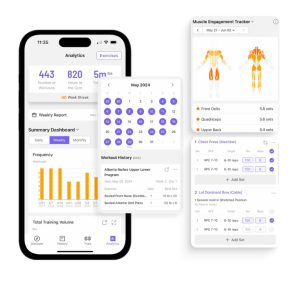

Key product features
What you should know
Boostcamp is an ideal app for data nerds who want to track daily, weekly, or monthly progress, create custom workouts, or use one of the many created by elite athletes.
- We like the Boostcamp app for lots of free workouts and access to the wide variety of strength and bodybuilding workouts that can be done with just a few pieces of equipment.
- The app is free; Boostcamp Pro is $79.99 for the year, which is comparable to other data-driven apps on the market.
- Great for beginners, intermediate, or advanced athletes who work out at home and see progress reports.
Why we like Boostcamp as best tracker
Boostcamp has elite coaches like Jim Wendler, who is well-known in CrossFit circles, offering a wide range of programming for beginners to advanced athletes. You could have zero equipment or a whole home gym and Boostcamp has workouts for everyone. It’s very customizable. Whether you are into bodybuilding, sculpting, or bodyweight fitness, you can choose between 104 coach-designed workouts or 3,265 workouts created by Boostcamp community members. Many of the workouts are created and ready to go, but you can create custom workouts if that works better for you.
Once your programming is set up and you begin workouts, there are lots of data points to track your progress. Your dashboard displays the total number of workouts and workout streaks, and you can toggle between day, week, and month. Many of the features are free.
For gym enthusiasts who are into data, you might want to pay for the premium subscription, Boostcamp Pro, which includes training analytics, muscle engagement tracker, and a workout toolkit. The muscle engagement tracker shows how many sets you performed on a specific muscle group, quadriceps or upper back, per day. The workout toolkit includes a custom program builder so you can create goals like a one rep max deadlift, for example.
The workouts are available on the app for you to follow along the directions, but there are no videos or live coaching, which might be challenging for beginners. The app allows you to share your workout with the Boostcamp community or just your circle of friends. The app is free to download on iOS or Android devices. Boostamp Pro costs $79.99 for the year, or $15 per month.
What customers are saying
Boostcamp gets more than 6,200 reviews on the Apple store and currently has a 4.9 out of five stars.
One verified buyer, named MisMikl, says, “Short and sweet: a ton of strength training and fitness programs broken down for you in a very easy to digest weekly schedule.”
Boostcamp gets lots of praise for tracking data points that were previously tracked on a spreadsheet. The trackers make it easy to see how athletes are progressing in their training program.
That said, some users have noted bugs in the app, the app crashing and forcing the athlete to close the app, but Boostcamp has responded on the Apple Store.
“As a daily user of the app myself, I agree the pesky bugs are annoying. We just launched a release that fixes many of the bugs you mentioned, and also launched the beta of the custom program creator. Would love for you to update the app and check it out!” noted Boostcamp customer service representative, Michael.
Specs
| Price | $79.99 per year, or $15 per month |
| Free trial | Yes, seven day for the Boostcamp Pro |
| Compatible with | iOS, Android |
| Workout types | Bodybuilding, powerlifting, sculpting, |
Best workout app for men: Centr
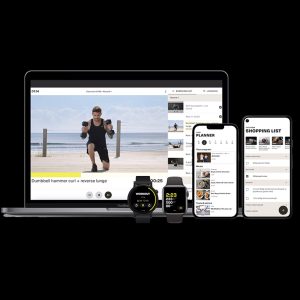

Key product features
What you should know
When looking for a workout app, it’s important how it may impact other areas of wellness. Centr’s well-roundedness is something our team appreciates.
- Two of our reviewers rated Centr 5 out of 5 stars for instruction, which should give users confidence about being able to execute the movements correctly.
- While this app costs $30 per month, you can reduce your monthly cost by signing up for a three-month or year-long plan.
- By taking a holistic approach to health, Centr provides a well-rounded collection of resources to help you get stronger, fitter, and mentally sharper.
Why we like Centr as best for men
Known for his muscular physique, actor Chris Hemsworth created a holistic health app that offers not only a wealth of strength training programs but also mindfulness exercises and a deep library of recipes that can help men become the best versions of themselves. (To be clear, there’s no reason why women can’t also use this app.)
Unlike the Future app and some of the other apps on this list, Centr does not directly connect you with a one-on-one personal coach. However, the app features daily workouts led by an expert trainer or self-guided sessions programmed by a team of fitness professionals.
At $30 for one month, Centr won’t take a big bite out of your budget. And with three- and 12-month subscription options that come out to $20 or $10 per month, respectively, you do have the opportunity to save by making a long-term investment.
“If you’re going to commit to using it for a longer term, the three-month or one-year option makes it a great value, especially if you take advantage of the healthy meal suggestion planner and automated grocery list.”
Team Product Tester
With a value rating of 4 out of 5 stars, Centr also scored high marks from our reviewers for ease of use (4.5 stars) and instruction (5 stars). Between text, photos, and video instructions and even some workouts led by Hemsworth himself, our reviewers each enjoyed the thorough explanations and overall experience training with the app.
While Centr excels at implementing progress overload concepts in its programming, the app isn’t just limited to strength training programs. There’s a wide variety of workouts that include bodyweight, yoga, pilates, and HIIT.
“The programs range from three to 13 weeks, but the majority are six to eight weeks,” our reviewer noted. “The programs can be repeated, too, with increasing weights.”
In addition, the app focuses on mental health and nutrition, with mindfulness exercises and meditations led by Hemsworth and an excellent meal planning and recipe section.
“Centr has also partnered with a highly regarded performance nutritionist to add to the quality offerings in the app itself and the user experience,” says Mohr.
Clearly, this has been noticed and beneficial, leading to our product reviewer saying, “I can’t stress enough how much I like the recipe section—their food is kickass.”
What customers are saying
Customers on the Apple App Store love the ability to customize the app to their needs, along with the inclusion of well-sourced articles and educational resources for learning more about healthy eating and working out.
“This app is amazing. I have learned so much and I’m always excited to share my knowledge with my friends. I’ve told so many people about Centr. The meal planning with the ‘add to shopping list’ button that has only the portions that you’ll need to cook with? *chef’s kiss* I love it.”
Username “Koala Bug,” Apple App Store
However, another user felt that some of the movements don’t suit all fitness levels.
“The workouts were challenging but simple and mundane. Also much of the core work involves a lot of intense exercises that require a lot of ‘knee’ work like gorillas and what resembles floor work breakdancing!” a customer with the username Cj morrison wrote. “These moves are really not made for people like myself that are over 40 and have had knee surgeries and issues.”
Specs
| Price | $30 per month, $60 for three months, or $120 for one year |
| Free trial | Seven days |
| Compatible with | iOS, Android |
| Workout types | Strength, functional fitness, HIIT, pilates, yoga |
Best gym workout app: JuggernautAI
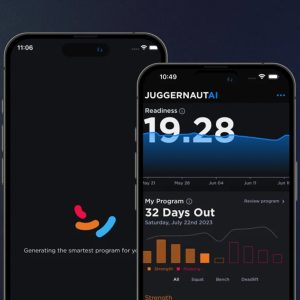

Key product features
What you should know
Unlike many workout apps, JuggernautAI doesn’t involve working directly with a coach. Instead, the platform relies on intuitive AI to create a personalized strength training program that adapts as you progress.
- While some workout apps have lackluster initial assessments, our product tester reported that JuggernautAI conducted a thorough one that helped with creating a well-devised program.
- Starting at around $30 per month, this workout app provides excellent value, as you essentially get a powerlifting coach in your pocket.
- Anyone who’s focused on developing power and strength and refining their weightlifting technique should put JuggernautAI near the top of their list for workout apps.
Why we like Juggernaut AI as best for gym workouts
For those prioritizing muscle and strength gains, JuggernautAI will take your gym sessions to the next level. Crafted by powerlifter and championship-winning coach Chad Wesley Smith, this AI-driven fitness app allows everyday athletes to tap into his expertise without the need for face-to-face interaction.
Unlike some of the other workout apps on this list, JuggernautAI doesn’t involve working with a live coach. Instead, it relies on AI that utilizes data to tailor a routine to enhance your performance in the three core powerlifting movements: squat, deadlift, and bench press. The software accounts for factors like your previous fitness experience, personal records, weak points, and current training load to create a plan that will allow you to maximize your efforts in the gym.
While some individuals may prefer direct coaching, our product tester appreciated Juggernaut’s AI technology, along with an easy setup process that earned 5 out of 5 stars. However, the lack of human interaction led to a slightly lower accountability rating of 3.5 out of 5 stars.
“This app provides a step above what most fitness apps provide in terms of accountability, but not nearly as much accountability as having a live coach. I also don’t like to feel like I’m getting behind, and having scheduled workout days makes me less likely to bail.”
Team Product Tester
Additionally, Juggernaut received 3 out of 5 stars for interactive features. Beyond logging readiness, weights, sets, reps, and rate of perceived exertion (RPE), the app doesn’t involve extensive interaction. Nonetheless, this simplicity may suit those who prioritize completing workouts over spending time scrolling on their phones.
“I think the experience has a good level of interaction that holds you accountable but isn’t overwhelming or annoying,” our product tester noted.
One area where JuggernautAI stands out is in the all-important value category. After six weeks of using the app, our reviewer gave it a perfect score of five out of five stars.
“At $35 per month, this is a phenomenal value,” she stated. “There are plenty of other workout apps out there charging $30 or more per month for on-demand, pre-filmed workouts. This app provides real coach insights at an incredibly affordable price.”
Ultimately, if you want to put your gym membership to good use, it’s important to have a structured workout routine that emphasizes progressive overload, which has been shown to enhance muscular adaptations. (9)
“Progressive overload can be accomplished in a number of ways; either through increasing weight, repetitions, frequency, or even time under tension,” adds Mohr.
Even though JuggernautAI doesn’t pair you with a personal trainer, its responsive AI will give you the upper hand as you progress with your fitness journey.
What customers are saying
JuggernautAI is one of the top-rated workout apps on the Apple App Store. Many users have experienced significant leaps in their strength while using the intuitive program.
“The most individualized and scientific-driven powerlifting app on the market. If you’re interested in not only increasing your total but developing a better understanding of the thought process behind the scientific principles of training, this app is a must-get.”
Username “DJP_85,” Apple App Store
However, there are a few criticisms of the JuggernautAI app. Some users call out the number of exercises per workout as a drawback.
“The number of exercises and sets per session seems very excessive and is difficult to complete in a reasonable amount of time,” wrote a reviewer with the username “griffith.sat.”
Specs
| Price | $35 per month for a monthly plan; $350 for an annual plan |
| Free trial | Two weeks |
| Compatible with | iOS, Android |
| Workout types | Strength, powerlifting, powerbuilding, bodybuilding |
Best workout app for building muscle: Ladder


Key product features
What you should know
With the Ladder app, you can receive personalized program recommendations based on your goals and training style.
- Our product tester gave Ladder 5 out of 5 stars for progressive overload, noting that this feature helps the app stand out from its competitors.
- At $30 per month for the Pro monthly plan, you get plenty of bang for your buck. This version offers a weekly workout plan, progress tracking, Apple Watch and Spotify/Apple Music integration, and other resources.
- Ladder is a solid choice if you’re looking for a structured approach and ongoing support during your muscle-building journey.
Why we like Ladder as best for building muscle
If you’re looking to get stronger and want to work out at home, Ladder is an awesome option. Those are the exact words used by our product tester, who gave this strength training app an impressive overall score of 4.3 stars after using it for several months. Given her background as a certified personal trainer, that speaks volumes about how well Ladder incorporates progressive overload principles to help users achieve their strength and muscle-building goals.
“This is where the app shines,” she noted. “It’s not a bunch of random workouts that you just choose from each day.”
Instead, Ladder utilizes five- to six-week blocks, followed by a deload week. Research shows that deloading—a period of reduced training stress designed to mitigate physiological and psychological fatigue—can help promote recovery and enhance your preparedness for subsequent training sessions. (10)
“It’s unique to see an app offer this—suggesting rest for users versus just pushing harder and harder. Taking a break and giving your body and muscles time to recover—layman terms for deload—can be of benefit physically and mentally.”
Chris Mohr, Ph.D., RD, Fortune Recommends Advisor
Ladder’s user-friendly interface makes it incredibly simple to follow your training plan. Our reviewer, who boasts more than a decade of strength training experience, rated the app 5 out of 5 stars for ease of use.
“I’ve tried several workout apps and this one is the easiest to navigate and stick with by far because it takes the guesswork out of the equation,” she noted. “After you choose your program, all workouts for the week are pre-programmed for you. I really like this because it provides a foolproof way for progression/progressive overload, which is something I need right now with three kids at home.”
Once you’re ready for a workout, the app preps you with what equipment you need, and it allows you to sync with Spotify and your Apple Watch. In addition, Ladder lets you pause if you need more time to complete a set or have to take a break, and it allows you to record your weights and reps as an easy way to help achieve progressive overload.
Our tester believes Ladder delivers incredible value, rating it 5 out of 5 stars in this category.
“Thirty dollars a month for a multi-week series carefully planned out to get results is a steal,” she wrote. “You’d pay hundreds to get an online plan from a qualified CPT, and although you’re missing the personalization aspect, I still think it’s well worth it for the average person who doesn’t have any specific concerns and just wants to get in better shape.”
What customers are saying
Users on the Apple App Store praise the highly qualified coaches for providing structure and motivation that has helped them build muscle, strength, and self-confidence.
“You can tell they aren’t just throwing workouts together; they have so much intentionality in their programs. Having access to so many great trainers is great too because it allows the coaches to create programs that aren’t one size fits all like most fitness apps strive for.”
Username “Matt.S.1987,” Apple App Store
One negative review called out the exercise demo video feature as an area that needs improvement.
“By the time the video loads to demonstrate the workout the timer is up and it’s moved on to the next workout,” a customer with the screen name Alpal1516. “Even the previews take 5+ minutes each to load.”
Specs
| Price | $30 per month for a monthly subscription; $180 for an annual subscription |
| Free trial | Seven days |
| Compatible with | iOS |
| Workout types | Strength |
Best bodyweight workout app: iFIT


Key product features
What you should know
iFIT’s interactive programming lets you take full advantage of a variety of workouts. With thousands of classes and many types of workouts from which to choose, users can easily find a program that fits their goals and needs.
- Our product testers appreciated that the classes adjust your personal goals; whether you want to increase your walking distance, running speed, or gain agility.
- An individual iFIT membership costs $15 per month, but you can upgrade to a family membership for $39 per month.
- iFIT’s wide range of classes gives beginners ample opportunities to test different ones and discover which type of training style and coach they enjoy best.
Why we like iFIT as best for bodyweight exercises
Viewed as a worthy rival to the Peloton app, iFIT boasts thousands of live and on-demand classes that can make working out more engaging and effective, especially for beginners. With over six million users, this virtual training platform enables you to take fitness classes from the comfort of your home with quality instructors who bring energy and expertise. The app syncs seamlessly with ellipticals, treadmills, and other equipment, making it a valuable tool to maximize your investment.
Following a breezy setup process that earned 5 out of 5 stars from our product tester, you’ll be able to browse through a versatile library of classes that includes strength training, rowing machine, yoga, and even mindfulness exercises. Our reviewer appreciated the app’s intuitive design, which helped it earn 4.5 out of 5 stars for ease of use.
“It’s also pretty cool you can view all the workouts you’ve taken, including the specific class, the calories burned, and duration,” she noted.
iFIT doesn’t just stop at convenience; it excels in keeping you motivated and engaged, scoring 4 out of 5 stars for interactive features and 4.5 out of 5 stars for instruction.
“I do think that iFIT has emerged as a true Peloton competitor. I always did the outdoor runs and rides when I tested iFIT, so the person is working out right there with you. I thought they were great.”
Team Product Tester
Our tester enjoyed participating in challenges, complete with leaderboards to see how she stacked up against other users. For beginners, this can be a great way to gauge your progress as you attempt to hit certain milestones. However, since the app is mostly self-guided, our reviewer only scored it 3.5 out of 5 stars for accountability.
At $15 a month for the individual plan and $39 for a family plan, iFIT offers excellent value. Not only do you have access to a wealth of classes and instructors, but you can also choose your training environment.
What customers are saying
This beginner-friendly personal training platform elicited positive feedback on the Apple App Store for providing an immersive, interactive experience and a wide variety of workouts led by experts.
“It has become my favorite tool in my toolbox. I have greatly enjoyed the scenic routes, the education of the location, and the inspiration to commit to education on choices for a better quality of life.“
Username “Lovebadger01,” Apple App Store
A few negative reviews mentioned that the workout library can be difficult to navigate, leading to too much time being wasted.
“The Browse section lacks search capability, which requires users to spend a good bunch of time looking for the workout they want to start,” commented a user with the screen name SUPABWE. “People have limited time to work out and if it’s taking me 5-10mins to continue scrolling up and down then that’s half my workout time spent.”
Specs
| Price | Family plan is $39 per month or $396 per year; Individual plan is $15 per month or $180 per year |
| Free trial | 30 days |
| Compatible with | iOS, Android |
| Workout types | Cycling, treadmill, HIIT, rowing, strength training, yoga, pilates, bodyweight |
How to choose the best workout app for you
With so many fitness apps on the market, it can be daunting to choose one that is right for you. Choosing the best workout app depends on your personal fitness goals, technological preferences, and other needs. Since nobody has time to scour the entire fitness app market and review all of the options, here are some key factors to consider when you’re getting started:
Fitness goals
Before selecting an app, make sure you are clear about your fitness goals and objectives. Are you aiming to build muscle, lose weight, improve endurance, or increase flexibility? Apps tend to cater to specific goals, so choosing one aligned with your desired outcome ensures more tailored workout plans and progress tracking.
Features
Every fitness app has slightly different features. Evaluate the app’s features to see if it provides what you’re looking for. If you’re not sure, try out a few different features before determining which are most important to you. Features can include guided workouts, personalized workout programs, or progress tracking. Some apps connect with wearables, providing more in-depth information while others connect to specific exercise equipment. Some apps offer more flexibility, allowing you to create custom workouts, while others are more structured. Make sure the app aligns with how you prefer to train—whether you need variety, progression, or specific workout modes (strength, cardio, etc.).
User interface and experience
When choosing a fitness app, it’s essential to find one that is easy, intuitive and comfortable for you to navigate. If the interface feels cluttered or difficult to manage, it can detract from your experience and motivation. A clean, user-friendly design can make it easier to track progress, follow workouts, and stay engaged and motivated with your workouts.
Compatibility with fitness level
Not every fitness app caters to the same fitness level. It’s essential to choose an app that fits your current fitness level. If you’re a beginner, look for an app that offers beginner-friendly workouts and proper guidance on technique and form. On the other hand, experienced athletes might prefer an app that offers more advanced training options, challenges, and goal-setting features without the basics.
Cost
While many apps are free or offer free trials, most come with subscription fees or in-app purchases. Consider your budget and whether the paid features are worth it for you. Look at how long a free trial is and then what the monthly or annual fees might be for an ongoing subscription. Free apps might have limited functionality, but if a paid app enhances your experience with premium content, it could be worth the investment.
Community and support
Some workout apps offer built-in communities where users can share progress, tips, and encouragement. If social interaction and accountability motivate you, look for an app with strong community support or integrated social features. This can help you stay consistent and enjoy the experience more.
Integration and features
If you use other fitness trackers such as a smartwatch, heart rate monitor, or any other wearable device, make sure the app integrates smoothly with these tools. Apps that sync with your existing tech setup can provide more accurate data and enhance your ability to track progress across different devices.
How we test workout apps
We’ve completed thousands of training sessions using some of the top workout apps. Our in-depth testing process allows us to rate them on a scale of 1 to 5 stars across more than a dozen categories. While not all categories applied to every app we evaluated, our product reviewers completed a thorough analysis to provide the most accurate, authentic feedback possible.
Program design—30%
Our highest-rated workout apps take away the guesswork by offering user-friendly features like video demonstrations, audio cues, and written instructions so you can perform every movement with the correct form. We also gave higher scores to apps that don’t require you to spend extra money on equipment and don’t encourage you to push yourself beyond your capabilities.
Here are all of the factors we consider when evaluating program design:
- Explanation
- Versatility
- Reasonable amount of training volume
Value—30%
We evaluate whether the price matches the level of tools and features the app provides. The criteria that go into our value rating include:
- Fair price
- Personalization
- Technology
Extra options—20%
Working out regularly is a major part of a healthy lifestyle. Having a coach for accountability can help ensure you stick with your routine.
Following a healthy diet, getting enough sleep, and learning how to manage stress also contribute to your overall health and well-being. That’s why we give extra points to the workout apps that offer bonuses like:
- Additional programs
- One-on-one coaching
- Tech extras
Customer experience—20%
Is the set-up process simple? Do users typically run into trouble with glitches or bugs? We assign higher scores to apps that take little time to set up and perform without hiccups.
In addition, we measure each app on these criteria:
- Reliable and user-friendly apps
- Reviews
- Customer service
- Free trials and flexible cancellation policies
Benefits of the best workout apps
Why should you consider spending your hard-earned money on a workout app? Here are some of the main ways you can benefit from squeezing another subscription into your monthly budget:
Accountability
Even if you don’t have access to a live coach, a workout app can provide a strong measure of accountability. Push notifications can force you to get off the couch and get in the gym. In the case of Joggo, establishing a running streak may encourage you to lace up your shoes and complete your workout even when you’re not completely motivated.
If you do work directly with a certified personal trainer, that person should be equally invested in your success and communicate regularly to ensure you’re keeping up with your program.
Convenience
Rather than searching aimlessly for free workout videos to try during your next weightlifting session, wouldn’t it be better to have a plan to follow? Fitness apps are incredibly convenient since they provide structure and organization.
In addition to their programming benefits, they also offer user-friendly features like video demonstrations and tracking tools that can take away some of the guesswork. No matter what time you train, you’ll be better equipped to make the most out of your session with the support of a workout app. It’s like an accountability partner that you can have in the palms of your hands at all times.
Cost-effective
As an ISSA-certified personal trainer, I can attest that the cost of in-person training can be a roadblock for some people. At a rate of about $1 per minute, three 30-minute sessions per week would total about $360 for a month’s worth of training.
On the other hand, investing in a workout app can be a cost-effective solution that provides some of the same benefits. With monthly subscriptions falling closer to the $200 mark, you can save a few bucks and still get expert-driven programming, along with interactive features and access to other tools that will help you remain accountable and invested in your fitness journey. Plus, if you’re hesitant about making that type of investment, there are even free apps that can help get you started before you’re ready to go all in.
Personalization
A one-size-fits-all approach is never the best way to get optimal results. Rather than following a generic program that doesn’t account for your strengths, weaknesses, and goals, a workout app provides a personalized pathway for you to make progress. Typically, your initial assessment will ask questions about your preferred training style, current fitness level, injury history, and other areas so you can be set up for success with a coach and/or program that suits you best.
FAQs
Do workout apps really work?
Utilizing a workout app such as Future or Caliber can be an effective way to stay on course as you work toward achieving specific health or physique goals. Not only do many platforms offer accountability measures in the form of messaging and video calls with coaches, but they also have tracking capabilities to monitor your progress.
Depending on the app, you can also receive guidance on meal planning and nutritional strategies—two key elements that affect your performance and results. Of course, adherence matters most with any fitness goal, so investing in an app only makes sense if you plan on keeping up with your program and implementing feedback from your trainer (if applicable).
What is the best workout app?
After testing more than 30 workout apps, Future stands above the rest of the pack. In addition to a well-designed interface that’s easy to navigate, it features excellent audio and visual cues for each exercise. Most importantly, users can look forward to a unique experience working with a coach who will create a custom training program, perform routine check-ins, and make adjustments based on your progress.
What is the best free gym plan app?
The best free gym plan app largely depends on your fitness goals and personal preferences. Many free apps offer features like workout libraries, customizable routines, and progress tracking, making them great for strength training, cardio, and functional fitness. These apps typically allow users to follow structured workout plans or create their own customizable version based on equipment and focus areas. The best apps include instructional videos and tips so users can feel confident in their form. Some apps also include community functions such as stat sharing and fitness challenges to keep users motivated. While many apps offer premium features at a cost, the free versions usually provide enough tools for effective gym workouts without requiring a pricey upgrade.
Is there a workout app for iPhone?
iPhone users have nearly endless options when it comes to workout apps. Depending on your preferences and goals, you can subscribe to a strength training app like JuggernautAI or a cardio-centric one like Joggo.
You can also utilize the Apple Fitness+ app, which can be accessed from your iPhone’s settings or the App Store. New subscribers can take advantage of a free 30-day trial to determine if it’s worth paying $9.99 per month (or $79.99 annually) for access to 12 different types of workouts, plus customized training plans. Another reason to consider subscribing: You can share Apple Fitness+ with up to five family members so everyone can get involved.
Is there a workout app without a subscription?
Yes, there are workout apps that don’t require a subscription, but it may mean less features. Some apps offer a one-time purchase option or provide a robust free version with no need to subscribe. For example, some of the fitness apps listed above, like Caliber and Shred, have a subscription-free option. These apps typically offer access to workout routines, exercise libraries, and basic tracking features.
While many fitness apps are moving toward subscription models for advanced features like personalized plans, progress tracking, and premium content, some still allow users to access useful tools without ongoing fees. However, the scope and variety of workouts might be more limited compared to those with subscription models.
Our experts
Jen Roper, Ph.D., CSCS
Dr. Jen Roper is an associate professor of Health and Human Sciences at Loyola Marymount University. She received her Ph.D. in Physical Education, Sports and Exercise Science in 2015 from the University of New Mexico, with a specialization in Exercise Science and Biomechanics. She has been a Certified Strength and Conditioning Specialist from the National Strength and Conditioning Association since 2014.
Chris Mohr, Ph.D., RD
Dr. Chris Mohr is a registered dietitian who holds a PhD in exercise physiology. He’s written extensively for magazines and newspapers like Men’s Health, USA Today, Women’s Health, and many more. He has worked with everyone from the NFL teams to WWE wrestlers, celebrities, and executives worldwide.
Amanda Dvorak, CPT
Amanda Dvorak is a Fortune Recommends writer and editor. A garage gym owner who is passionate about working out and healthy living, she has four years of experience writing product reviews for fitness and nutrition websites. Amanda is a certified personal trainer through the International Sports Sciences Association (ISSA).
Kelly Uhler
Kelly Uhler has a multifaceted background in elder care, health care, and copywriting. She has worked for organizations such as A Place For Mom and Homecare.com, which gave her the opportunity to work closely with families, providing reliable information to help them make informed decisions about their loved one’s health, safety, and quality of life.

Stephen Sheehan, CPT
Fortune Recommends Writer
About Author
Stephen Sheehan is an ISSA-certified personal trainer and nutritionist who uses his fitness expertise to review products for Fortune Recommends™. A two-time University of Florida graduate, he has a diverse writing and editing background that’s primarily focused on sports, health and fitness, and e-commerce content. His work has been featured in Runner’s World and Keto Magazine, as well as Bulletproof, Breaking Muscle, and YouFit Gyms.
References
- Eynon, M., Foad, J., Downey, J. A., Bowmer, Y., & Mills, H. (2019). Assessing the psychosocial factors associated with adherence to exercise referral schemes: A systematic review. Scandinavian Journal of Medicine & Science in Sports, 29(5), 638–650. https://doi.org/10.1111/sms.13403
- Bess H. Marcus , Vanessa C. Selby , Raymond S. Niaura & Joseph S. Rossi (1992) Self-Efficacy and the Stages of Exercise Behavior Change, Research Quarterly for Exercise and Sport, 63:1, 60-66, DOI: 10.1080/02701367.1992.10607557
- Williams, T. D., Tolusso, D. V., Fedewa, M. V., & Esco, M. R. (2017). Comparison of Periodized and Non-Periodized Resistance Training on Maximal Strength: A Meta-Analysis. Sports medicine (Auckland, N.Z.), 47(10), 2083–2100. https://doi.org/10.1007/s40279-017-0734-y
- Evans JW. Periodized Resistance Training for Enhancing Skeletal Muscle Hypertrophy and Strength: A Mini-Review. Front Physiol. 2019;10:13. Published 2019 Jan 23. doi:10.3389/fphys.2019.00013
- Andersen, D., Baird, S., Bates, T., Chapel, D. L., Cline, A. D., Ganesh, S. N., Garner, M., Grant, B. L., Hamilton, K. K., Jablonski, K., Jones, S. L., Kazaks, A. G., Konek, S. H., Leonard, K. K., McAdam, K. G., Ogata, B. N., Onuoha, E. M., Robinson, G.Y., Schmidt, D. W., . . . McCauley, S. M. (2017). Academy of Nutrition and Dietetics: Revised 2017 Scope of Practice for the Registered Dietitian Nutritionist. Journal of the Academy of Nutrition and Dietetics, 118(1), 141–165. https://doi.org/10.1016/j.jand.2017.10.002
- Kang, S.H., Park, Y.S., Ahn, S.H., & Kim, H.H. Intermittent fasting: Current evidence in clinical practice. (2020, kJune 30). J Obes Metab Syndr, 29(2):81-83. https://www.ncbi.nlm.nih.gov/pmc/articles/PMC7338490/
- Harrison, Jeffrey S CSCS, NSCA-CPT. Bodyweight Training: A Return To Basics. Strength and Conditioning Journal 32(2):p 52-55, April 2010. | DOI: 10.1519/SSC.0b013e3181d5575c
- van den Tillaar, R., & Saeterbakken, A.H (208, June 13). Comparison of Core Muscle Activation between a Prone Bridge and 6-RM Back Squats. J Hum Kinet, 62:43-53. https://www.ncbi.nlm.nih.gov/pmc/articles/PMC6006542/
- Plotkin D, Coleman M, Van Every D, et al. Progressive overload without progressing load? The effects of load or repetition progression on muscular adaptations. PeerJ. 2022;10:e14142. Published 2022 Sep 30. doi:10.7717/peerj.14142
- Bell L, Strafford BW, Coleman M, Androulakis Korakakis P, Nolan D. Integrating Deloading into Strength and Physique Sports Training Programmes: An International Delphi Consensus Approach. Sports Med Open. 2023;9(1):87. Published 2023 Sep 21. doi:10.1186/s40798-023-00633-0



